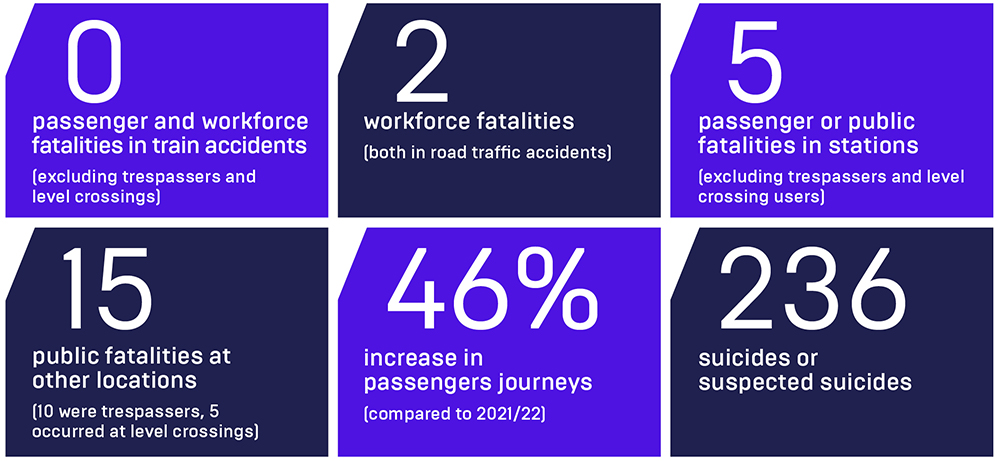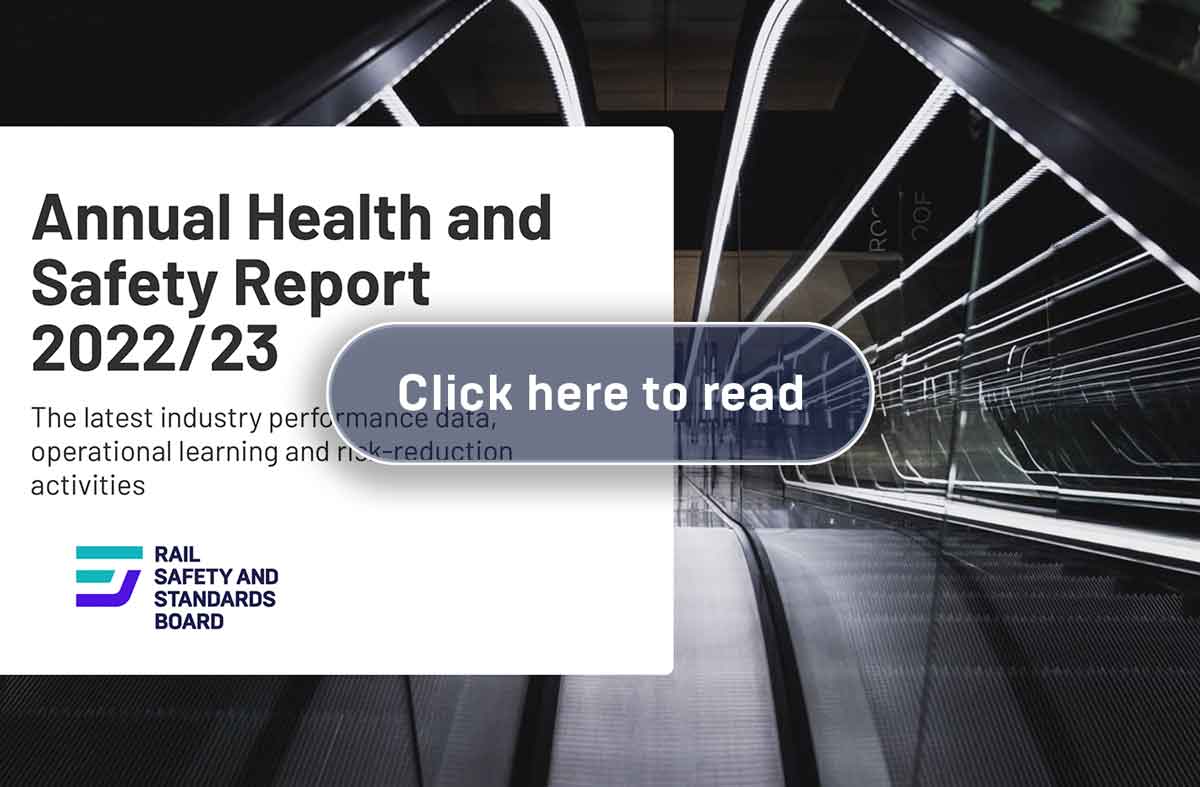Health and safety in a time of change
We’re delighted to announce that our latest Annual Health and Safety report is now online. The AHSR covers 12 areas, from fatigue risk management to asset integrity. It gives you the big picture across rail as well as being a gateway to the data behind it.
Rail safety headlines 2022/23

We can see that rail is an extremely safe way to travel. Despite passenger journeys being up almost 50% compared to last year, we saw zero fatalities from train accidents, and few deaths overall – although even one would be too many.
However, we know the railway is currently undergoing significant change. We face industry reorganisation, with the network not yet back to normal post-pandemic. And this is in the context of even bigger, global and societal transitions – such as climate change.
The AHSR reminds us to ensure that the disruption, change and new behaviours we’ll be seeing across rail don’t take our focus off safety.
What changes can we expect?
Rail assets are coming under increasing strain as time goes on. Decisions made long ago can affect operations today – for instance, the Nuneham Valley Viaduct was closed for structural repairs this year, due to the failure of work carried out during the Great Depression in the 1920s.
Other assets like earthworks are under pressure from environmental changes, like more frequent extreme weather events. In response, we developed a Whole System Risk Model (WSRM) to help the industry respond proportionately and safely when such weather events occur.
The data we gather for the AHSR also shows wider changes in human behaviour. Post-pandemic, we’ve seen a significant increase in incidents of trespass, work-related violence and even people sitting on the edge of platforms, legs dangling.
Britain’s vast rail network needs to respond effectively and safely to such broad changes.
Why the focus on change?
Periods of change present specific challenges for health and safety. Learnings from rail and other industries show that change, whether organisational, societal, budgetary or technical, can expose workers and passengers to new or unfamiliar situations. In some cases it can cause us to take our eye off the ball, moving operational focus away from safety towards other priorities.
So it’s important to communicate to all that safety is always our first priority. But it’s also important to remember that very often, change is positive.
Looking forward without forgetting the past
At RSSB we’re constantly creating, and promoting, safer and smarter ways to do things. But we balance this with maintaining rail’s institutional memory, capturing the lessons of the past.
Our new self-assessment tool for fatigue risk is endorsed by the ORR. It helps staff throughout the network make informed decisions about their ability to safely carry out their duties. And in some areas we’re actively working to bring about more change – like our work on Signals Passed At Danger (SPADs). While rail’s extremely safe, SPADs haven’t reduced materially for ten years – so we’re leading discussions about what’s needed for future train protection systems.
RSSB’s ongoing health and safety work – monitoring data, performing analysis and reporting – is one of the key ways we help rail. With industry involvement in our H&S groups and committees, we can all work together to help advance safer, smarter rail.
Read this year’s report to find out how well industry is managing the health and safety of passengers, employees and those who interact with it.


